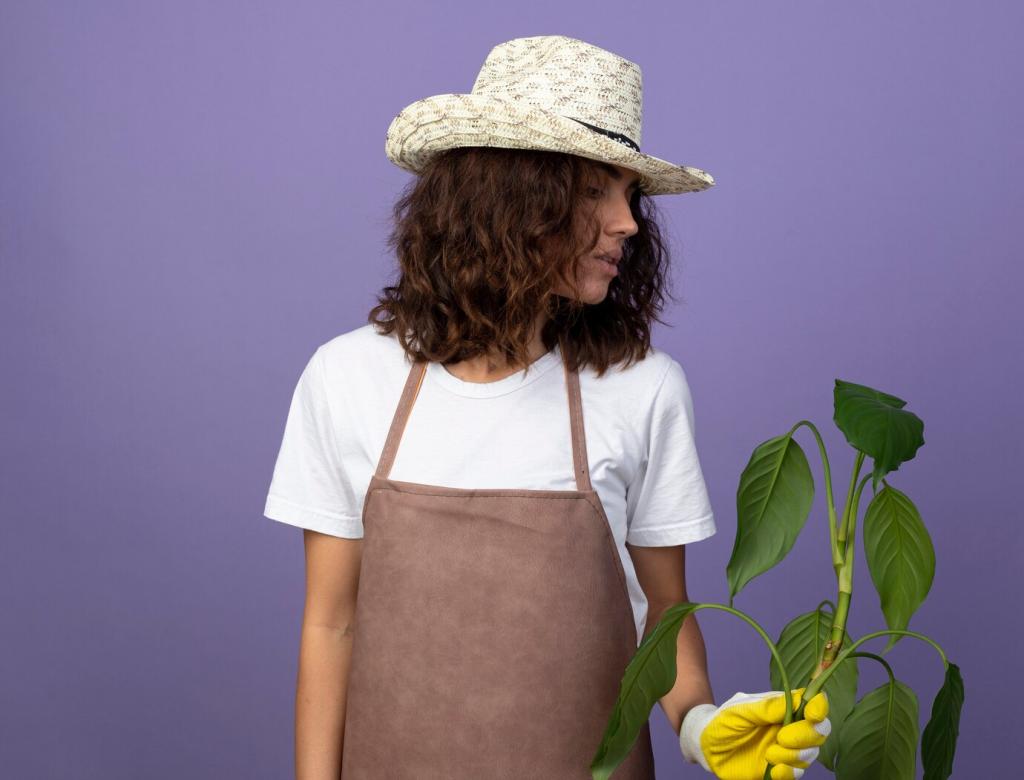Innovative Fabrics: The Sustainable Revolution in Fashion
Today’s chosen theme: Innovative Fabrics: The Sustainable Revolution in Fashion. Step into a future where creativity meets responsibility—where materials grown from nature, engineered in labs, and rescued from waste redefine what style can feel like, look like, and mean. Join our community, ask questions, and help shape tomorrow’s wardrobe.



The New Material Landscape
Pineapple-leaf leather, banana fiber blends, and citrus byproduct silks show how agricultural waste can become wearable beauty. These materials reduce pressure on land and water while honoring farmers’ byproducts. Which plant-based textile would you try first? Tell us in the comments and inspire a reader’s next mindful purchase.
The New Material Landscape
Mycelium-based leather alternatives and protein-derived performance fibers prove that lab innovation can rival traditional textiles without the heavy ecological toll. Scientists fine-tune strength, texture, and dye affinity at the molecular level. Curious about comfort and durability? Subscribe to receive our wear tests and long-term performance diaries.
Performance Without Compromise
Innovative knits from eucalyptus and beech pulp deliver cool-touch breathability, while bio-based nylons enhance abrasion resistance for activewear. Designers blend fibers thoughtfully to balance drape and durability. Comment with your non-negotiables—softness, stretch, or structure—so we can test future materials against what truly matters to you.
Performance Without Compromise
Caring for new-era fabrics is simple when you know the rules: cold washes, gentle detergents, and air-drying extend life and save energy. Use microfiber-catching bags for synthetics to reduce shedding. Want a printable care guide for your closet? Subscribe and we’ll send a friendly, fabric-specific checklist to your inbox.


From Waste to Wardrobe: Circular Design
Mono-material garments, low-impact dyes, and dissolvable stitching make recycling real, not theoretical. Hardware swaps—like screw-in buttons—streamline repair. Imagine a blazer whose lining, shell, and trims can be separated in minutes. Would you pay extra for repair-friendly design? Share your stance and help push the industry forward.


In a coastal studio, a two-person label replaced polyurethane leather with pineapple-leaf composite. Their first batch cracked at the seams, but patient prototyping and better backing fabrics delivered resilience. They now track orders with repair credits. Would you join their tester circle? Comment to volunteer and shape real products.

A materials scientist told us a favorite moment: the first time a lab-grown fiber spun smoothly on a traditional mill. It proved compatibility, not just novelty. She says curiosity fuels progress—your feedback does too. Submit your most pressing fabric question for our upcoming interview series.

Historic mills are weaving recycled cotton with traceable lyocell, pairing century-old looms with modern quality controls. The result: fabrics that feel familiar yet tread lighter on resources. If you could tour one mill, where would it be—Italy, Japan, or your local region? Cast your vote and we’ll plan coverage.
Styling the Future: Wear What You Believe
01
Start with breathable lyocell shirts, a mushroom-leather jacket, and recycled-denim trousers. Add a merino-recycled blend sweater for seasonless warmth. Choose versatile colors to maximize wears. Share your capsule idea in the comments, and we’ll create a reader-sourced lookbook celebrating thoughtful style choices and material curiosity.
02
Eucalyptus-based fabrics offer silky glide, while hemp-linen blends bring earthy texture and structure. Mycelium leather softens with time, developing character like cherished vintage. Post a photo or description of your favorite fabric feel and why it speaks to you—your tactile insights guide our next styling experiments.
03
Ask brands about fiber origins, dye methods, and end-of-life plans. Seek third-party certifications and repair policies. If responses feel vague, consider alternatives with clearer transparency. Want a pocket-sized checklist for store visits? Subscribe and we’ll share a printable card to keep your values front and center.
Your Role in the Revolution
For one month, choose one innovative fabric for daily wear—lyocell tees, hemp blends, or recycled fleece—and note comfort, care, and compliments. Share your reflections and we’ll compile a community report. Ready to participate? Comment “I’m in” and we’ll send a starter guide to your inbox.

Your Role in the Revolution
Track five items: material, age, repair history, and cost-per-wear. You’ll spot heroes worth mending and fabrics that underperform. Post your findings—what surprised you most? Your insights help others invest in textiles that last, reducing waste while celebrating pieces that deserve a second, third, and fourth life.
Myths vs. Facts: Getting Clarity
Myth: Sustainable Fabrics Are Always Expensive
Fact: Cost-per-wear often beats cheaper, short-lived garments. Durable, repairable pieces save money and reduce waste over time. Share a long-lasting item’s story and its true cost-per-wear—your example can help another reader rethink thriftiness as longevity rather than just a low price tag today.
Myth: Recycled Means Lower Quality
Fact: Chemical recycling rebuilds polymers, enabling high-performance yarns that rival virgin quality. Blends and finishing techniques further enhance hand feel and strength. If you’ve owned recycled garments that surprised you, describe them below—we’ll compile your anecdotes into a practical, myth-busting reference for newcomers.
Myth: Natural Automatically Equals Sustainable
Fact: Farming methods, water use, dye chemistry, and energy sources all matter. Responsibly managed forests and low-impact dyes can outperform some conventional natural materials. Ask brands for specifics and certifications. Post a label you’re curious about, and we’ll decode it in an upcoming, subscriber-only deep dive.
